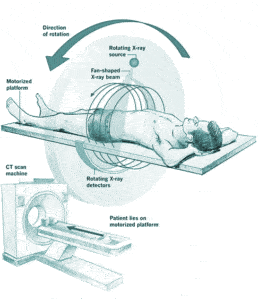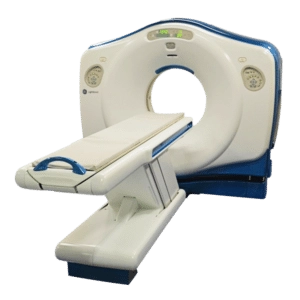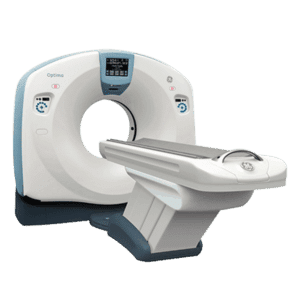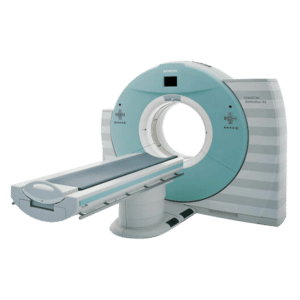A CT Scanner uses a motorized X-Ray source that rotates around the circular opening of a round structure called a gantry

The CT Scanning technique was first discovered by Sir Godfrey Hounsfield, and the first CT scan was performed in October of 1971 on a cerebral cyst patient at Atkinson Morley Hospital in Wimbledon, London, England. In 1975, Hounsfield built a whole body scanner. Now, the CT scanner is one of the most recognizable and widely used imaging machines in the world. But how does the CT scanner work exactly?
Traditional X-Ray machines use a fixed X-Ray tube, but a CT Scanner uses a motorized X-Ray source that rotates around the circular opening of a round structure called a gantry. A patient will lie on a bed that takes them through the gantry, while the X-Ray tubes slowly rotate around the patient while shooting narrow beams of X-Rays through the body. When the X-Ray source completes a rotation, the CT computer uses math techniques to make a 2D image “slice” of the patient.
Each slice represents thickness of tissue, and can range from 1 to 10 millimeters. When a full slice is completed, the image is stored in the computer and the motorized bed is moved forward incrementally into the gantry. The X-Ray scanning process will then repeat itself to produce another image slice until the desired number of slices are collected.
Individual image slices can be shown, or even stacked together to generate a 3D image of the patient in order to show the skeleton, organs, and tissues in addition to any abnormalities the physician is trying to identify. The 3D method is very advantageous as physicians are able to rotate the 3D image in space or even view slices in succession, which make it easier to find where the problem may be located.
Get Started
Request Pricing Today!
We’re here to help! Simply fill out the form to tell us a bit about your project. We’ll contact you to set up a conversation so we can discuss how we can best meet your needs. Thank you for considering us!
Great support & services
Save time and energy
Peace of mind
Risk reduction
Hopefully, we’ve given you a bit of insight into how a CT Scanner works. However, there is so much more to a CT Scanner, and our experts here at Amber will be happy to discuss with you more in depth about CT Scanners here at Amber. You can contact them here.



